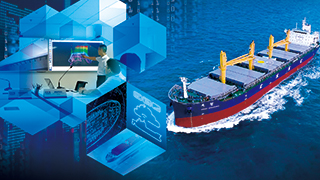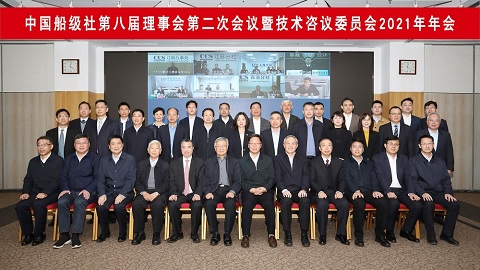On March 18, 2022, “DING HENG 19”, built and surveyed by CCS Wuhu Branch, was successfully delivered in Wuhu Shipyard.
On March 18, 2022, “DING HENG 19”, built and surveyed by CCS Wuhu Branch, was successfully delivered in Wuhu Shipyard. It is the first DC power-propelled double-phase stainless-steel intelligent chemical tanker of CCS.

DING HENG 19 was built by the Wuhu Shipyard Co., Ltd. for Shanghai Dingheng Shipping Technology Co., Ltd. It has a total length 111.98 m, molded breadth 17.60 m, and molded depth 8.90 m. It is equipped with the liquid cargo tank boundary made of nickel-efficient double-phase stainless steel and the DC distributed power-driven propulsion system. It was awarded the notations including “i-Ship (N, M, E, I)” which stands for “Intelligent Ship” (intelligent navigation, intelligent engine room, intelligent energy efficiency, and intelligent integration platform). The “double-standard” plan approval, building and survey of the ship were implemented according to the requirements of International Convention on Unrestricted Navigation Areas and Technical Rules for the Statutory Testing of Seagoing Vessels on Domestic Voyages of China, and met the need of transportation service for the oil products in the international trade and the chemicals in the domestic trade. The delivery of this ship indicated that CCS achieved another new breakthrough in the survey of the highly-intelligent ships with the high additional value and advanced propulsion system.
Focusing on new materials, and coworking in overwhelming difficulties
On the basis of project needs, CCS assessed and predicted the difficulties in both materials and technologies of the ship in advance. The multi-party interaction was made by the expert team of the Building Business Division of the CCS headquarters, CCS Shanghai Rules & Research Institute, CCS Jiangsu Branch and CCS Wuhu Branch jointly to carry out deep study and careful tests on the welding process, mechanical properties and corrosion resistance of Nickel-efficient double-phase stainless steel materials selected by the shipowner. They worked together in unison and made every effort in providing the service with higher efficiency, lower costs and added value and high-quality safety assurance for the shipowner and shipyard. They also provided application examples for the study of CCS in the direction of Nickel-efficient double-phase stainless steel materials.
DC powered propulsion for “double-carbon” target
For the power system of the ship, the AC asynchronous generator set is adopted for power generation; the current running through the rectifying device forms the DC network; power energy is transmitted through the DC distribution board to the propelling inverter and daily inverter to drive the PM (permanent-magnet) propulsive synchronous motor and provide energy to other daily loads. In the DC power distribution system, the diesel generator set can adjust the rotation speed based on the changes in different load power to ensure that the ship is always in efficient operation, which greatly improves the overall efficiency of the propulsion system, reduces the energy consumption and emission and achieves the actual ship speed that is significantly higher than the designed ship speed. Therefore, high recognition from the shipowner was obtained.
Working on the intelligent ship for generating added value
The ship was awarded the notation of “i-Ship (N, M, E, I)”. In addition to its built-in monitoring and alarming system, it is equipped with a vibration monitoring system, shaft power meter, fuel oil mass/flow meter, on-line lubricating oil analyzer and other devices. It can be used for the real-time data acquisition of nearly 800 monitoring points. The on-board intelligent system and land-based technical support are combined, and the data management technology is applied, so as to fulfill the optimization of navigation routes and speeds, monitoring of engine room status, assessment and decision of engine room health, on-line monitoring and rea-time assessment of energy efficiency, auxiliary energy efficiency management (including the generation of MRV reports and early warning of emission control zones) and other aspects, and to substantially realize the prospective development in the direction of intelligent downsizing and workload reduct
Note: If you need to reprint, please indicate the source of the information.













